Reviews
Terence Fisher
UK, 1967
Credits
Review by Rumsey Taylor
Posted on 21 October 2010
Source Anchor Bay DVD
Categories 31 Days of Horror VII
In 2007, Hammer Film Productions announced that it had risen again: under new management and for the first time since it closed up film production in 1979 (and following a stint on TV in the 80s), the famed British production company would begin filming several new pan-European horror productions, including the remake of the Swedish vampire film Let the Right One In. This return from the dead ostensibly revives a tradition of horror filmmaking that began in 1957 with The Curse of Frankenstein and continued until 1976’s To the Devil a Daughter. While Hammer had flooded the B-movie market with an exhausting number of films during those interceding two decades (psychological thrillers, cave girl pictures, and even some science fiction), by far the most popular of its productions were its horror films, launched in a variety of successful franchises (Dracula, Frankenstein, the Mummy, Jekyll & Hyde, etc.), as well as more obscure one-offs and mini-series (the Karnstein trilogy, zombie and werewolf films, and stories of witchcraft, satanism, and the black arts). Hammer’s films run the usual gamut of a production company keen on exploiting every possible facet of the macabre - from mad scientists and bosomy vampires to hippie satanists and kung-fu witch-hunters - but at their best, these films exhibit a remarkable self-consciousness and a flair for the gothic, even when the quick-and-dirty productions demand chunky stageblood, sets and effects that are less than fully realized, and absurdly exclaimed lines of dialogue from talented, but opportunistic actors like Christopher Lee, Peter Cushing, Oliver Reed, and Ralph Bates. Every Thursday throughout October, we’ll be peering into the vault of Hammer, highlighting some of our favorite films from its often sly, sometimes silly, but always sinister body of work.
Hammer Horror commenced with The Curse of Frankenstein in 1957. It was additionally the studio’s first franchise film, the success of which led to a rich family of permutations of Dracula, Mummys, Dr. Jekylls, Phantoms, and a whole bevy of maniacs of varying deformity and histrionics. Despite this perceptibly stalwart roster of ghouls, it is important to note that these films often departed from their assimilated mythologies. Curse - the first of Hammer’s six Frankenstein films - was drawn more directly from Universal’s 1939 Son of Frankenstein than it was Mary Shelley’s novel, and this is not to mention the radical difference in the monster’s physical appearance to Boris Karloff’s mumbling behemoth—itself, even by the time of this film’s making, as familiar an icon as the horror genre may boast.
I have not seen all of Hammer’s franchise films, much less all of their Frankenstein films, but I have little hesitance in hyperbolizing the conceptual innovations of the studio’s fourth Frankenstein film, Frankenstein Created Woman. The film is an assembly of requisite Hammer staples: it is set in some small European village with a rather exaggerated discrepancy between socioeconomic strata. The women are typically voluptuous and ingenuous, the men formally haggard and suspicious. Peter Cushing inhabits the first of the two title roles, his Baron Frankenstein trademarked in that diamond-shaped face that looks not unlike a fleshed-out skull with lips pursed into a beak. At the start of the film he is in exile in the village that serves as the film’s otherwise nonspecific 19th Century setting, and poor. But his lack of wealth is relayed only in demeanor; otherwise, he is unbecomingly dapper and mannered—that is, for a scientist with intentions as radical and macabre as his. One evening, penniless and framed in an outstanding top hat, he unemotionally arranges for his laboratory assistant to mend one of a restaurant’s newly wounded patrons in exchange for dinner and champagne. “Landlord!” he says with sparing punctuation, “My friend and I will dine—your menu please.”
In his magnificent screen entrance, Baron Frankenstein is rolled into view in a coffin that’s been set in a freezer for an indeterminate but clearly perilous duration. Although there is some suspense as his laboratory aids begin to resuscitate him, this suspense is disabled in the realization that he is remarkably well-dressed lying there in that ice coffin. You get the impression that, in preparation for this rather belligerent experiment that finds him as his own specimen, he took the time to consider his garments in case the experiment was unsuccessful.
Baron Frankenstein will remain similarly fashionable throughout the film. When the experiments that accompany the film’s necessary plot of reanimation commence, he’s in a matching vest and slacks, and scampering about in dainty velvet hand gloves. But I reiterate: he is a scientist without wealth or apparent renown, driven expressly by the promise of scientific revelation—and such revelation, we know, will be the climax of the film.
By the year of this film’s release Shelley’s Frankenstein had met over a dozen cinematic iterations, most all of which were popular. My suspicion is that by this point viewers of Frankenstein Created Woman were not only sufficiently familiar with the film’s source, but engaged by the prospect of adaptation. The title, for one, prosaically describes the plot’s attempt at revision. As such the film’s charms are unlike those of other Frankenstein adaptations, which to a large extent concentrate on the revelation of the monster’s physical appearance and its often mystified construction: from the very start of this film we know basically that the prototypical mad scientist reanimates a lifeless body, and furthermore that the resultant creature will be that most potent cinematic object of lust and intrigue.
This woman (who is revealed at length in the film’s trailer) is beautiful in a perverse sense, with tan round cheeks that insulate a precocious smile, which is typically flanked by a dollop of feathered blonde hair. This smile is seen rarely, and when it is it has a second meaning. She is emphasized in more or less the same manner as other Frankenstein’s monsters, revealed after a suspenseful removal of bandages (accompanied by an out-of-focus POV shot). She has no perceptible scars or stitches, and she’s dressed in a manner characteristic of other buxom Hammer maidens, so when we regard her we are not regarding the miracle of her existence, as we do other monsters; we are clearly and exploitatively regarding her obvious beauty. When she smiles - often in a closeup precisely parallel to the direction of her disarming brunette eyes - the effect is an entrancing fear. Her beauty invites suspicion, because we are accustomed to knowing that Frankenstein’s monster is morally conflicted, only this conflict isn’t in this case plainly obvious.
Significantly, the scene of this woman’s reanimation - which is summarized in jump cut - occurs over halfway through the film, after a generous amount of time has been devoted to establishing the bodies or personas that will comprise her subsequent form. The film opens in the sentenced death of a local murderer, witnessed by his young son, Hans. Some twenty years later, Hans is articulately moral but has sublimated his father’s murderous tendencies. He’s seeing the daughter of a local hotel proprietor, Christina; she has a pronounced limp that disables her from waitressing her father’s bar, and her face is bisected by a ghastly scar. She pulls her hair down over it, and even as she limps along her beauty is rather undiminished. One night, after three pompous hoodlums harass Christina and her father, Hans intervenes in an eruption of violence. In between weeps and alone in bed, the two declaratively express their love for each other later that evening.
Hans will be sentenced to death in the same manner as his father, and Christina, wrought with sudden despair, tosses herself off a bridge shortly thereafter. Baron Frankenstein - whose talent in manipulation is tantamount to his lack of sympathy for the recently departed - eagerly collects the bodies and combines them in a fashion that is utterly astonishing: he distills the soul of the boy into the body of his crestfallen lover.
This is enough to satisfy the film’s query into masculine and feminine psychosis, and the cumulative plot machinations have to do with the conflict between the monster’s dual souls. But the most remarkable aspect of this reanimation is its physical details. Although the monster is portrayed by the same woman as before (Susan Denberg, one in a string Hammer-employed Playboy Playmates), she is noticeably made up. The previous Christina was, scars and limp notwithstanding, brunette and unconfident; the new one is a textbook blonde, outfitted notably - after her rebirth - in a puffy nightgown and with a newfound proclivity for corsets and low-cut blouses. Considering her formation, and regardless of her ensuing purpose to the plot (which has to do in the revenge of the son’s blackmailers), this emphasis on beauty is provocative: has Frankenstein idealized the female form? Or has the presence of a man - Hans, the one man who has loved this specific body more than any other - coerced such new and obvious beauty?
Frankenstein Created Woman ends abruptly after the primary conflict is resolved, and the answers to these questions remain ambiguous. Christina, having satisfied the posthumous desires of her internalized boyfriend, considers the perverseness of her murders for apparently the first time, and she is both appalled and humiliated. She ignores the Baron’s pleas for self-forgiveness, and he watches as his creation disposes of herself, a casualty of unfathomable confusion. With this, and absent the explosive combat that other Hammer films culminate in, Frankenstein Created Woman concludes with the image of Cushing’s familiar face, only it no longer broadcasts determination.
More 31 Days of Horror VII
-

The Thin Blue Line
1988 -

The Ninth Configuration
1980 -
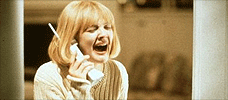
Scream
1996 -
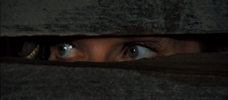
Dying Room Only
1973 -
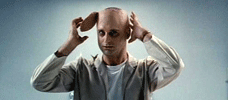
Brain Dead
1990 -
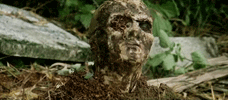
Zombi 2
1979 -
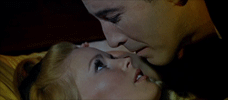
Dracula Has Risen from the Grave
1968 -
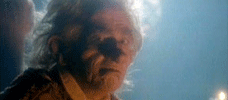
The Storyteller
1988-1989 -
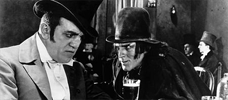
Dr. Jekyll and Mr. Hyde
1920 -
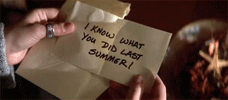
I Know What You Did Last Summer
1997 -
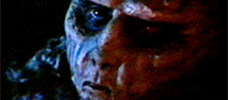
Don’t Be Afraid of the Dark
1973 -

Dark Age
1987 -
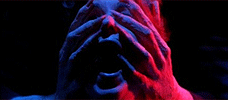
Inferno
1980 -
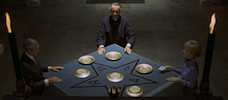
To the Devil a Daughter
UK / West Germany -
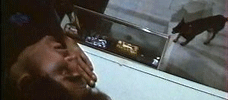
Trapped
1973 -
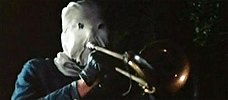
The Town that Dreaded Sundown
1976 -
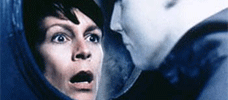
Halloween H20: Twenty Years Later
1998 -

Killdozer
1973 -
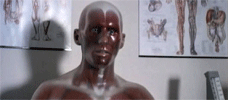
Pin
1989 -
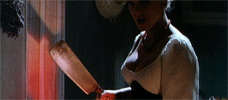
Frankenstein Created Woman
1967 -
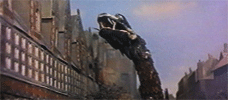
Reptilicus
1961 -
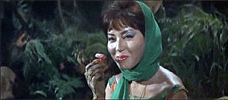
Matango
1963 -

I Still Know What You Did Last Summer
1998 -
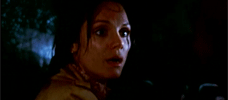
Night Terror
1977 -
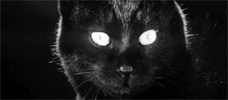
Kuroneko
1968 -

Demons
1985 -
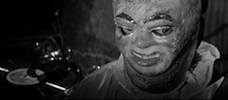
Paranoiac
1963 -
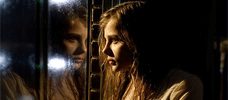
Let Me In
2010 -
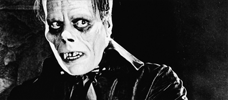
The Phantom of the Opera
1925
We don’t do comments anymore, but you may contact us here or find us on Twitter or Facebook.



